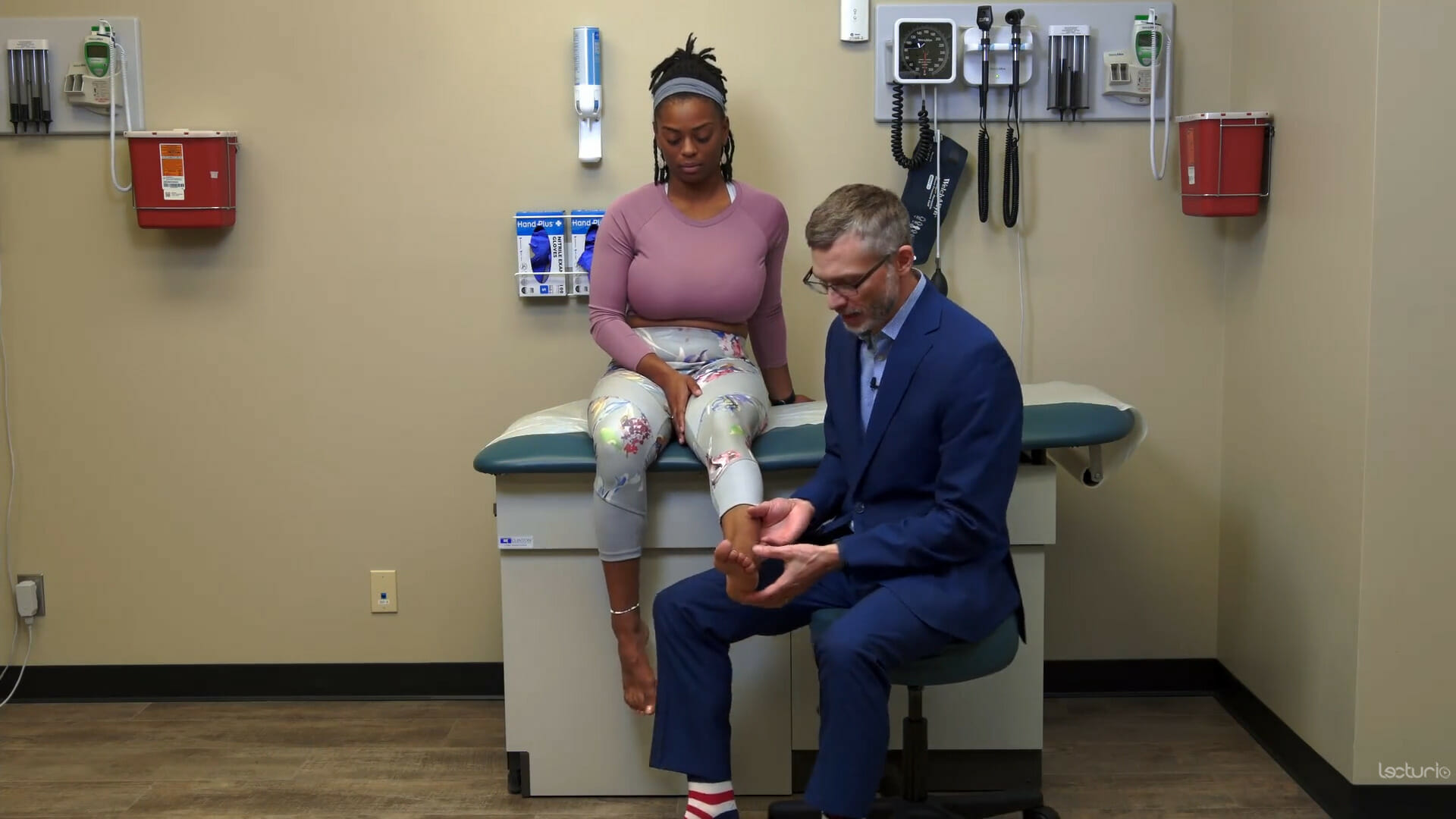Playlist
Show Playlist
Hide Playlist
Patient Introduction and Review of the Knee Anatomy
-
Slides Physical Exam Knee Pain Introduction.pdf
-
Reference List Physical Examination.pdf
-
Download Lecture Overview
00:00 So let's take a look at a patient with knee pain. 00:03 A 52-year-old obese man presents with acute on chronic right knee pain. 00:08 It's been waxing and waning for the past five years, and it's worse with activity. 00:12 After strenuous exercise yesterday, he now has warmth and swelling of the knee. 00:19 It will be important for us to review our anatomy before we move on to thinking about the different causes of knee pain here. 00:25 So always remember that we have a medial collateral ligament and a lateral collateral ligament, also known as the fibular collateral ligament. 00:33 There's the ACL or anterior cruciate and posterior cruciate ligaments in the middle. 00:38 In addition, around the patellar tendon, around the patella, you have a proximal quadriceps tendon and then a patellar tendon, more distally. 00:48 We're going to review some mechanical causes of knee pain, inflammatory causes, infectious causes and a variety of other causes as well. 00:58 In terms of mechanical, it's important to think of the knee as a joint with three compartments. 01:04 You have a medial compartment, a lateral compartment, and then the patellofemoral compartment. 01:09 And certainly osteoarthritis is the most common cause of knee pain in men and women who are older. 01:18 In younger women in particular, we can have malalignment issues such as patellofemoral pain syndrome, where the different forces acting on the patella have caused it to be laterally displaced and that can cause problems with ambulation, even with prolonged sitting. 01:34 Musculotendinous strains like quadriceps tendinitis or patellar tendinopathy, ligament sprains and tears will want to come up with some good tests to rule out an MCL tear or ACL tear versus just a strain of those ligaments. 01:49 Certainly meniscal injuries are relatively common and they're inside the knee so we have to come up with some good tests to really identify what's going on with them. 01:59 Some patients with knee pain simply have a bone bruise or contusion. 02:04 And then, of course, we want to rule out stress fractures, particularly of the tibial plateau, as these can occur with too much use of that joint over time in the right patient. 02:16 There's also inflammatory etiologies for knee pain. 02:19 Rheumatologic, crystalline and simply bursitis like pes anserine bursitis. 02:25 It's going to be important that we know how to assess for warmth in both knees and how to look for an effusion. 02:32 In patients who do have risk factors for an effusion, like, for example, having recently undergone a procedure like an injection or recent surgery or any recent trauma to the skin, it's important for us to know that we're dealing with bacteria, most commonly Staph aureus. 02:48 And this is a high stakes diagnosis to identify a septic joint. 02:52 So we have to, again, know our anatomy and know how to access the joint if we need to. 02:58 So in summary, for this particular patient, we're thinking this could just be a flare of osteoarthritis, which can manifest with a small effusion, or is this acute gout? He's in the right age group for that. 03:09 Pes anserine bursitis just on the medial distal aspect of the knee. 03:14 Does he have an acute meniscal tear? or has he potentially strained one of his ligaments while he was doing that strenuous exercise yesterday? Well, let's move on with our physical exam.
About the Lecture
The lecture Patient Introduction and Review of the Knee Anatomy by Stephen Holt, MD, MS is from the course Examination of the Lower Extremities.
Included Quiz Questions
Patellofemoral syndrome is a common cause of which type of knee pain?
- Mechanical
- Bursitis
- Infectious
- Rheumatologic
- Meniscal injury
What organism is commonly seen with septic arthritis?
- Staphylococcus aureus
- Klebsiella
- Pseudomonas
- Escherichia coli
- Corynebacterium
Customer reviews
5,0 of 5 stars
| 5 Stars |
|
5 |
| 4 Stars |
|
0 |
| 3 Stars |
|
0 |
| 2 Stars |
|
0 |
| 1 Star |
|
0 |





